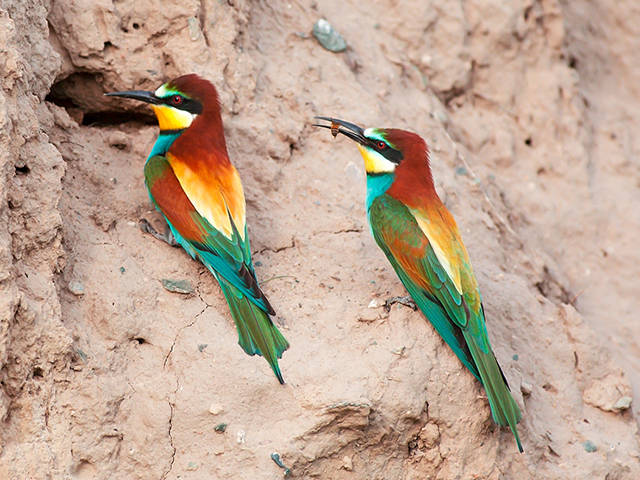
Common breeding migrant. Inhabits the open plain or hilly landscapes with soil or clay precipices; the river valleys and shores of lakes, especially near villages and towns. Appears in second half of April – mid-May in flocks of 10-70 birds. At Chokpak Pass latest migrants recorded in end of May. Breeds in colonies numbering from few to 30-40 pairs, by singly pair very rare. Nest is located in precipice hole depth of 1-2 m, excavated by both partners for 10-15 days; hole is finished by nest chamber without any lining. Later there is a layer of eructated the chitinous covering of insects. Clutch of 4-7 eggs is laid in end of May – June. Both parents incubate for about 20 days and then feed juveniles, which fledge at age about a month, in end July to first half of August. As soon as juveniles fledge the birds begin to disperse, and gather on wires along the roads and especially near apiaries. Intensive autumn migration is in first half of September, by flocks (adults and juveniles together) of several dozen up to 100-150 birds. Latest birds recorded in end of October.
Gavrilov E. I., Gavrilov A. E. "The Birds of Kazakhstan". Almaty, 2005. Э.И.Гаврилов. "Фауна и распространение птиц Казахстана". Алматы, 1999. "Жизнь Животных" том 5. Птицы. Москва. "Просвещение", 1970. В.К.Рябицев. "Птицы Урала, Приуралья и Западной Сибири". Екатеринбург. Изд-во Уральского университета, 2000.